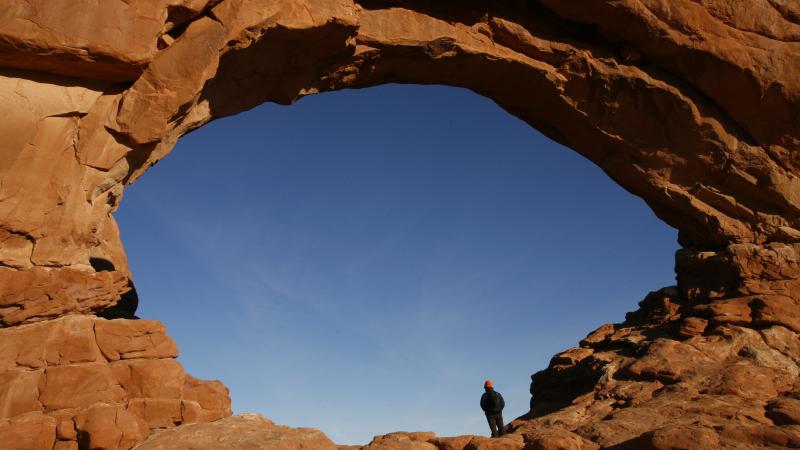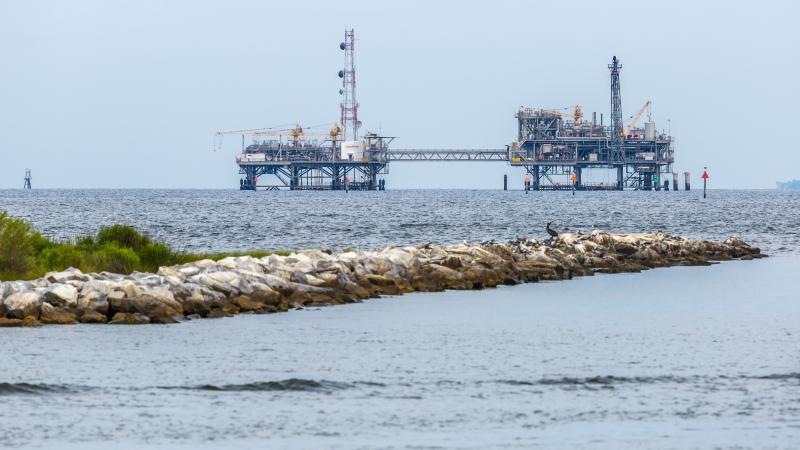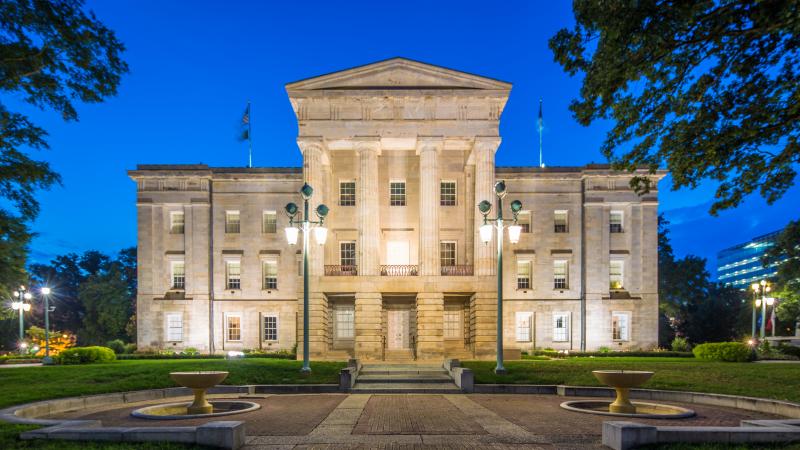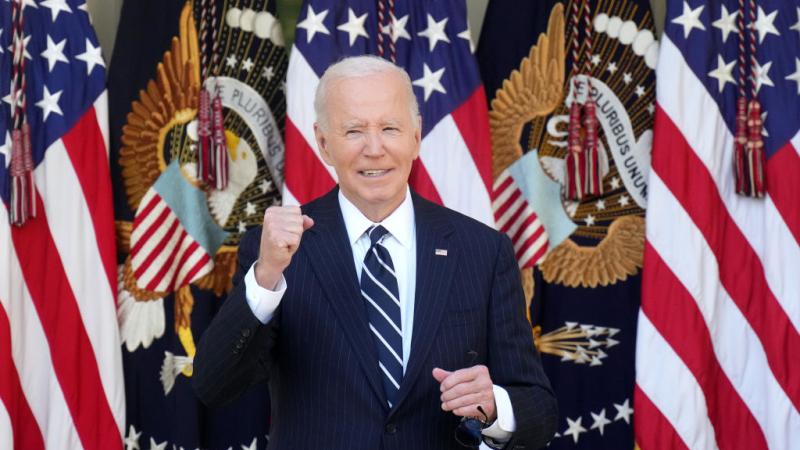Concerns about solar encroachment on farmland grows as USDA pulls subsidies for new projects
Food or Fuel? On-the-ground solar energy has some of the greatest land-use requirements of any energy source, and opposition to solar on agricultural land is growing. With subsidies being pulled, solar may see slowing growth in the coming years.
The U.S. Department of Agriculture is pulling the plug on federal support of solar projects being developed on America’s farmland. The agency announced Tuesday that it would no longer provide taxpayer dollars for solar panels on productive farmland.
“Our prime farmland should not be wasted and replaced with green-new-deal-subsidized solar panels,” Agriculture Secretary Brook Rollins said in the announcement.
On-the-ground solar energy has some of the greatest land-use requirements of any energy source, coming in after hydroelectric and coal, if the latter's mines are included. The huge swaths of land needed for solar farms make agricultural farmland attractive to developers. According to the USDA, within the last 30 years, Tennessee alone has lost over 1.2 million acres of farmland to solar farms, with another 2 million acres projected to be lost by 2027.
“Tennesseans know that our farmland is our national security, our economic future, and our children's heritage,” Tennessee GOP Governor Bill Lee said in a statement.
While solar has seen explosive growth in the past few years, the Trump administration and Congress are cutting back on the subsidies that have been driving a lot of the development. Growth in the coming years could be slower.
Community opposition to solar heats up
Concerns about solar using up farmland are not isolated to Tennessee. Across the U.S., communities are opposing solar development. Energy journalist and author Robert Bryce maintains a database of renewable energy projects that were denied permits or otherwise rejected by local communities around the world. Bryce has documented 369 solar projects rejected since 2015.
Communities that have rejected solar energy have done so for a number of reasons, including concerns about spoiling viewsheds, increased electricity costs and impacts on property values. But its impact on the availability of farmland is a growing concern as more agricultural land is subsumed by solar energy farms.
Since the supply of farmland in the U.S. doesn’t grow, agricultural acres transitioned to other uses decreases the supply, which drives up agricultural land costs, solar critics say. It also makes the U.S. more dependent on imports for its food supply.
Rep. Thompson: "Food security is national security"
“Secretary Rollins understands that food security is national security, and preserving prime farmland for agricultural production is a key component of protecting our food supply,” Rep. Glenn Thompson, R-Pa., said in the USDA statement.
Bryce recently produced a mini-documentary, “Sunblock: The global fight to save farmland from Big Solar,” in which he interviews farmers in Texas about the growth of solar around their agricultural property.
Thomas Doskocil, a farm owner whose property is outside Dallas, had hoped to retire and build a home on his property, which he tells Bryce had been in his family since 1955. Surrounding Doskocil's homestead are acres of solar farms that he said had been built in the past couple of years.
“It makes me sick to my stomach, because it was beautiful land. I could see 15 miles in a straight line from this hilltop. It was all native pasture,” Doskocil tells Bryce.
The solar project seen in the video, Bryce explains, has a capacity of 270 megawatts and takes up 2,300 acres for intermittent power. He compares that to a natural gas plant being built in Bridge City, Texas, which has a capacity of 1,215 megawatts. The natural gas plant will take up only 26 acres and consistently provide electricity, even when the sun isn't shining.
Decreasing subsidies
In his documentary, Bryce points out that, despite all the reporting of solar’s rapid growth, it only accounted for about 1% of total energy use in 2024, according to the “Statistical Review of World Energy.”
“So we could double, triple or quadruple solar output, and it's not going to move the needle dramatically. Why? Because we still get about 87% of our energy” from fossil fuels, Bryce states in the video.
Subsidies that are likely driving much of the solar industry's growth will be drying up in the years to come. While the USDA is cutting funding for solar within its programs, Environmental Protection Agency Administrator Lee Zeldin announced earlier this month that the agency is terminating the Biden/Harris "Solar For All" program, which earmarked $7 billion of taxpayer dollars to pay for solar projects for low-income people.
Over the next decade, the One Big Beautiful Bill Act, which was passed in July, will phase out the production tax credits that drove so much of the solar investment. Recent guidance from the Treasury Department also ended some safe harbor rules and increased requirements for eligibility.
Struggling industry and the Solyndra stigma
While the media regularly report on the growth of solar power plants as evidence of a booming industry, projects won’t be built without a steady flow of tax dollars to the industry.
Even before the Trump administration and congressional Republicans took an axe to its subsidies, the industry was seeing a lot of bankruptcies. Solar Insure, which provides warranties and insurance for solar investments, compiled a list of bankruptcies in the solar industry. The list counts 21 major U.S. solar contractors that went bankrupt between 2023 and June 2025. According to the list, 27 California solar companies closed in that time. More than a dozen closed in Texas. The number of bankruptcies annually grew from around 15 in 2021 to nearly 125 in 2024. According to Solar Insure, economics and policy were the primary drivers of the closures.
Long before Solar Insure's list was compiled, the name Solyndra has become synonymous with solar power being perceived as impractical, poorly run, politically-hyped and subject to corruption. According to Fortune magazine, the company was making solar panels using a thin, "next-generation" solar material. The company claimed big power companies would pay a premium for its solar panels, partly because the panels would save them money during the installation process.
Initially funded by a billion dollars in private equity, Solyndra, Fortune noted, was the very first company to snag the loan guarantee from the DOE’s newly-funded program, widely hyped by President Obama. The Guardian reported that in May 2010, Barack Obama visited the California-based solar panel manufacturing firm, the recipient of $535 million in federal loan guarantees, and "hailed it as an innovative company that was creating jobs and helping to fuel America's economic recovery."
Instead, reported The Guardian, "just 15 months later, Solyndra announced it was shutting down its hi-tech cylindrical photovoltaic fabrication plant, and laying off the bulk of its 1,100 workforce." The company soon filed for bankruptcy and, shortly after, was raided by FBI investigators. Congressional investigators raised questions of political corruption, with possible links between the White House and the involvement of a prominent Obama supporter and fundraiser, George Kaiser, whose family foundation was Solyndra's largest investor. Even the Obama-friendly New York Times was forced to admit that Solyndra's lobbyists corresponded frequently and met at least three times with an aide to a top White House official, Valerie B. Jarrett, to push for loans, tax breaks and other government assistance.
Although no crimes were found in the Solyndra debacle, in the view of the public, government guarantees for solar-powered projects are forever associated with mismanagement at best, or pork-barrel corruption at worst.
Now, with the government subsidies drying up, the number of canceled solar projects may increase. The number of new projects being built will also likely begin to decrease in the next several years. Those concerned about rural farmland being converted into solar farms will likely welcome the change.
The Facts Inside Our Reporter's Notebook
Videos
Links
- agency announced Tuesday
- said in the announcement
- greatest land-use requirements
- database of renewable projects
- increased electricity costs
- property values
- impact on the availability of farmland
- Sunblock: The global fight to save farmland from Big Solar
- natural gas plant being built in Bridge City
- despite all the reporting
- Statistical Review of World Energy
- Lee Zeldin announced earlier this month
- phase out the production tax credits
- increased requirements for eligibility
- booming industry
- steady flow of tax dollars
- Solar Insure
- compiled a list of bankruptcies














